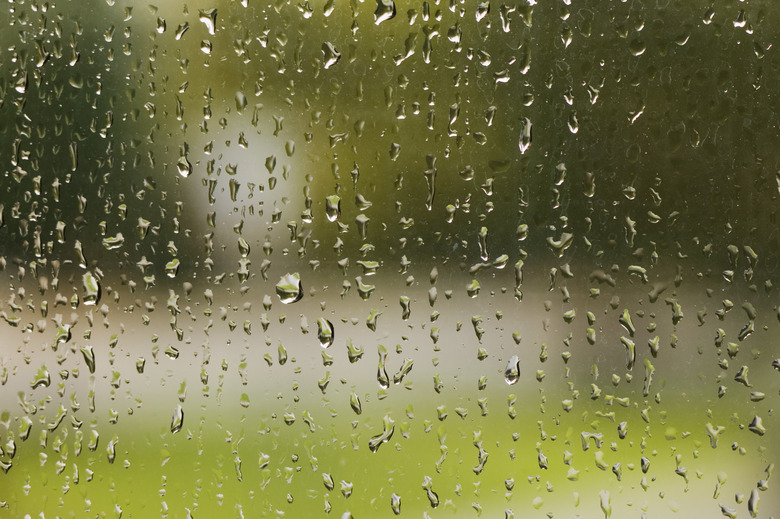Can You Varnish On A Rainy Day?
Varnish creates a protective coating on the exterior of surfaces that darkens to a pleasant amber tone over time. Instructions for varnish tell you not to do the project on a rainy day. The weather plays a significant role in how quickly the varnish dries and how its looks when it is finished. If you want a professional look to your varnished materials, you need to understand why rain can ruin the coating.
How to Varnish
How to Varnish
Prepare the surface to be varnished to improve adhesion of the varnish onto the surface. Lightly sand the surface with fine grit sand paper. Wipe any sand or dust off with a lightly dampened dust rag. Wait for the surface to completely dry after dusting it. A dry surface is important so the varnish sticks to the material and does not develop water bubbles under it. Rainy weather and high humidity add moisture to the air, which can settle on and dampen surfaces when you are trying to apply varnish. When opening the can of varnish, stir the contents and pour a small amount into a separate dish. This keeps dust and dirt from the brush from getting into the can. Stirring the varnish combines the components without adding air bubbles as shaking the can would. Apply the varnish to the surface with a foam brush, moving the brush in one direction. This prevents air bubbles from getting underneath the varnish.
Problems to Avoid While Varnishing
Problems to Avoid While Varnishing
Temperature extremes and damp conditions pose problems when applying a varnish. Weather that is too cold thickens the varnish, making it sticky and difficult to apply. Hot weather causes the varnish to set too quickly. This produces a poor gloss that will show brush strokes in the varnish surface. Wet conditions inside or outside, as is the case on a rainy day, increases the drying time and allows moisture to get underneath the vanish surface.
Moisture and Varnish
Moisture and Varnish
Moisture, as measured by the humidity level, is in the air all the time, but on rainy days, the humidity level increases to 100 percent. Unless you are in a climate-controlled environment with a dehumidifier or air conditioner, the humidity from outside will be present where you are varnishing. This poses problems in the finished look. Moisture from the air easily gets trapped underneath the varnish as you brush it on. Occasionally, this promotes the growth of mold, warns Paula Guhin in "The Complete Photo Guide to Creative Painting." Even if you prevent mold growth on your varnished surface, the moisture can form bubbles or make the varnish dry with a cloudy finish.
Ideal Varnishing Conditions
Ideal Varnishing Conditions
The ideal varnishing conditions ensure that it will dry properly with a smooth finish. According to "This Old Boat," by Don Casey, the ideal conditions should take into account both moisture levels and temperature. When varnishing, wait for a dry day with humidity below 80 percent. The temperatures should be between 50 and 85 degrees Fahrenheit. If you are applying the varnish to an outdoor surface, wait until at least two hours before sunset or after sunrise to allow the dew to evaporate or to ensure your varnish has dried to the touch before dew starts to form.
References
- The Complete Photo Guide to Creative Painting; Paula Guhin and Geri Greenman
- How to Paint Your Boat: Painting, Varnishing, Antifouling; Nigel Clegg
- This Old Boat; Don Casey
